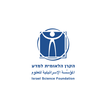Image credit: The Great Departure, © Victoria and Albert Museum, London (IM.30-1935) CC Attribution-NonCommercial-ShareAlike 4.0 (CC BY-NC SA 4.0)
A-TAG (Aśvaghoṣa’s Texts and Buddhist Art from Gandhara) is a digital humanities project that bridges the worlds of literature and art. It allows users to explore side-by-side two remarkable legacies of first-millennium Indian Buddhism: The Sanskrit poetry of Aśvaghoṣa (circa. 2nd century CE) on the life of the Buddha, and the contemporaneous rich Buddhist imagery from Gandhara, a region spanning present-day Pakistan and Afghanistan. Using an online text–image browser, the project makes it possible to view passages from Aśvaghoṣa’s works alongside visual depictions of the same episodes in artifacts from Gandhara. By doing so, it opens new ways of understanding how stories were told, retold, and transformed across words and images nearly two thousand years ago.
Initiated in 2021, A-TAG is the result of collaboration between scholars from CERES, Ruhr University Bochum (led by Frederik Elwert and Jessie Pons) and of “Aśvaghoṣa’s World”, an Israel Science Foundation (ISF) project at Tel Aviv University (led by Roy Tzohar, with Abigail Penn Levy and Inbar Maor); with the technical leadership of Rainer Simon, former lead developer of the Recogito annotation platform, who designed and constructed this website.






